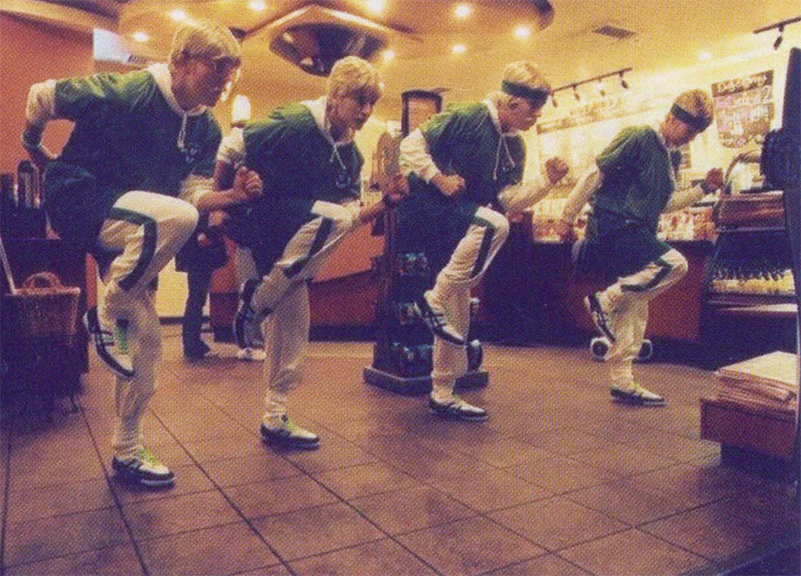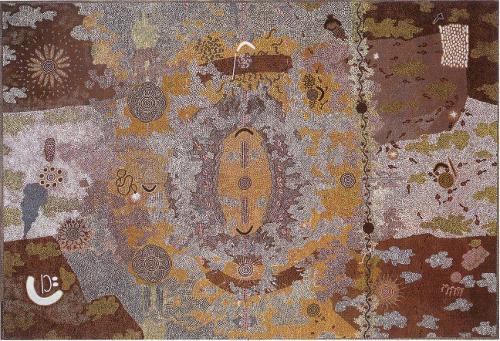
Primavera is the MCA's annual showcase of work by young Australian artists. Despite the fact that the premise of the exhibition is an investigation into new media practice and digital methodologies the artists in Primavera 2003 (and their works) are extremely diverse and defy unification under a common theme. Perhaps anticipating the obvious, 'This is new media!?' response to Jonathan Jones' sculptures (made from relatively ancient and resolutely analogue incandescent light bulbs) guest curator Julianne Pierce acknowledges in the catalogue that the exhibition also asks: what constitutes new media?
This question remains unanswered, as perhaps it should, and Primavera is left without a single unifying theme. However, it is possible to identity micro-themes within the exhibition. Several (not all) of the artists do appear to be participating in, critiquing or wilfully ignoring what naturalist David Attenbourgh calls a 'global mono-culture', and American cultural/political theorist Benjamin R. Barber gives the catchier title 'McWorld'.
In his essay 'Democracy at Risk: American Culture in a Global Culture', published in 1998 by World Policy Journal, Barber describes McWorld as 'an American push into the future animated by onrushing economic, technological and ecological forces that demand integration and uniformity and that mesmerise people everywhere with fast music, fast computers, fast food... pressing nations into one homogeneous global culture, one McWorld tied together by communications, information, entertainment and commerce.'
Along with McDonalds et al, Starbucks is a major player in the Americanisation of global culture with its cardboard comfort, mass produced atmosphere, bad coffee and personal freedom conflated with a bewildering array of consumer choices. Starbucks is so ubiquitous in the USA as to be almost invisible, but its entry into Australia (an apparently popular and seemingly bloodless invasion) has not gone unnoticed. In their video installation Welcome to the Jingle all female performance crew The Kingpins target Starbucks for ridicule. Identically dressed as blonde male joggers with bad skin, bad moustaches and bad green sweat suits, Angelica Mesiti, Techa Noble, Katie Price and Emma Price run through the streets of Sydney and invade the spaces colonised by Starbucks. As they perform their ridiculous dances and unconvincing parodies of masculinity in occupied territory two facades are revealed, collide and collapse: the ludicrous notion of white male superiority and the tragic absurdity of consumerism masquerading as culture.
While The Kingpins directly confront the incursion of McWorld into Sydney, Shaun Gladwell seems to be one of its happy, or at least cooperative, citizens. In his video Kickflipper, Gladwell performs tricks on his skateboard with the ocean and a graffiti style mural as a backdrop. Sydney's residents may recognise Bondi beach but this scene could just as easily be Venice, California or South Beach, Florida; this is Australia as American outpost. Writing on Gladwell's work in 2000, Kit Messham-Muir claims in 'Practices of the City and the Kickflipping Flaneur' that, 'His skating cuts across the pscho-geographical body of Sydney, subverting and reclaiming its spaces...' But both his global youth uniform and his skating are what Barber calls 'seemingly innocent Trojan-American horses nosing their way into other nations' cultures.' Rather than reclaiming space for a marginalised youth culture Gladwell is extending the territory of McWorld, or perhaps he is doing both simultaneously. With its endless spinning (hypnotic, balletic and futile) Kickflipper embraces the inevitability of mono-culture and the pointlessness of resistance.
In his Time Slice: Metrograph 2002-03 series of digital videos and prints Daniel Crooks documents urban Australian spaces and turns them into sites that are no-place or more accurately any-place. The real is made to look unreal, the mundane exotic. Melbourne's iconic trams are transformed into a rhythmic tidal wave. Inner city drones commute through a temporal space suspended and warped, starring in their own version of the Matrix minus the Kung Fu moves.
Shoppers are observed at calf height apparently through the syncopated and pixilated vision of a robot dog with sensors on the fritz. In the ultimate no-place of the lift, a tiny space constrained by strict social etiquette, passengers are liberated in a hallucinogenic haze slipping and sliding in and out though a zipper-like door. Even though Crooks calls his lift an elevator (another insidious Americanism, used either deliberately or unconsciously) he presents a world that is globalised without being homogenised, where time is simultaneously accelerated and arrested, a place of multiple perspectives in which resistance (or at least mutation) is possible.












